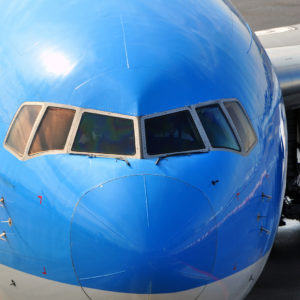At one point in our nation’s history, commercial air travel was proof that we were leading the way in technology and innovation. The greatest feats of engineering and modern luxury combined to create a commercial air experience unlike any other. This once incredible experience is long gone, replaced with nightmares of long lines, complicated yet inadequate security systems, overcrowded flights and airports, delays on hot tarmacs, and frequent system shutdowns.
While the growing list of travel tribulations may feel most acute to travelers on the ground, the reality is that nearly all travel challenges stem from our nation’s outdated and outstretched air traffic control infrastructure which is unable to keep pace with rapidly growing operational complexity. Without a focused FAA modernization effort, these commercial air inconveniences on the ground will soon worsen to tragedies in the air.
More specifically, the Federal Aviation Administration is not equipped with the necessary technology to adapt to this rapidly changing operational environment. Consider this strong statement from William Ris, a member of the Department of Transportation’s Management Advisory Council and a former top executive with American Airlines.
“We have let things go for a long time. We have 50-year-old radar installations and antiquated equipment. There’s no resiliency and redundancy in the system so if something went wrong, there wouldn’t be back up.”
With legacy systems, tasks cannot be automated using artificial intelligence and machine learning, nor provide a sufficient level of cybersecurity, nor set the standards for global aviation innovation and regulation, nor provide fail safe air traffic control to prevent mid-air calamities. The FAA, and all Americans who benefit from the safety it provides, absolutely must have reliable funding to provide a modernized automation system that addresses technological challenges, safeguards the national airspace from unregulated innovation, and ensures proper security in our post-911 era.
Consider the fact that hackers are targeting airlines for cyberattacks in numbers never seen before — in fact, there was a 15,000 percent increase in attacks from 2017 to 2018. Last year, the domestic airline industry had 10 major outages, the most since 2015. The airspace control systems currently in place are increasingly vulnerable to cyberattack. As terrorists and foreign adversaries move aggressively into the cyber world, it is crucial we safeguard our airspace with innovative and effective cybersecurity measures.
Commercial and recreational use of drones is just the beginning of the disruptive changes in store for our airspace. Air taxis, commercial space programs and dramatically increased traffic will heavily tax these legacy systems of the FAA, which cannot easily adapt to disruptive technology. For example, with 1.3 million drones now registered with the FAA, up from about 470,000 in 2016, drone traffic is becoming a major factor in our nation’s airspace challenges.
After countless examples of drones violating security and airspace protocols, it is clear the FAA needs to regulate private and commercial drones. While drones for recreation and industry are helpful, onboarding these many airframes into an already crowded airspace poses significant traffic and security challenges to the agency.
Unfortunately in the face of such challenges the FAA’s ability to modernize looks like a pipe dream. Americans saw this challenge play out firsthand during the 35-day government shut down that occurred from December 2018 to February 2019, resulting in major airline delays around the nation, as well as increased risk due to Air Traffic Control and TSA personnel shortages and declining morale.
Funding roadblocks have plagued the FAA for years, and now we are seeing the direct impacts. In 2015, FAA’s conversion to a satellite-based airplane navigation system was stalled by uncertainty over the agency’s funding in recent years, according to a report from the Government Accountability Office which stated: “According to the Federal Aviation Administration, its ability to perform its mission has been affected by budget uncertainty resulting from the 2013 government shutdown, sequestration, 2011 authorization lapse, continuing resolutions, and multiple short-term reauthorizations.”
For the last decade, Congress has failed to provide strategic transportation and infrastructure authorizations and appropriations that set the FAA on a path to innovation. The bottom line is that FAA modernization is a national infrastructure imperative and funding should be a critical priority of the administration and Congress.
Accelerated technology and operational complexity, coupled with increased threats of cyber warfare, require a modernized automation system and expertly trained personnel to meet the demands of the next generation of air travel. Failure to act now only increases delays and costs to carriers and consumers, poses heightened risks to a public deserving safe air travel, and threatens U.S. national security itself.

